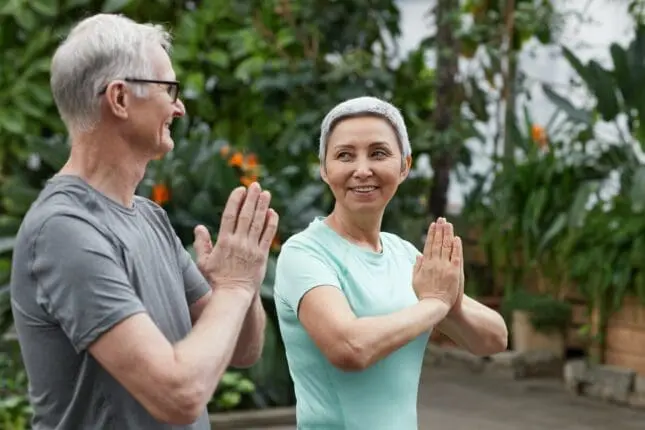As a clinical psychologist and a life-long student of meditation, I am intrigued when scientific research supports the insights of ancient mindfulness practices that date back more than 2,000 years. The Love Prescription by Drs. John and Julie Gottman, two of the nation’s leading experts on relationships, widened my professional horizons and expanded my understanding of the factors that enhance human happiness and health. The Gottmans have decades of data on relationships and have clarified their findings to help us understand which behaviors can create happiness and which ones destroy connection. I’ve tested their “hacks” in my life both in and out of the therapy office. I’ve found that these ideas can benefit virtually all relationships—from romantic partners to friends, children, family, work colleagues, and even with ourselves.
Fortunately, the interventions are simple, direct and don’t require long agonizing conversations. I’ve collected the most valuable insights to help you help your clients.
The Power of Turning Toward
The Gottmans explain that when one person tries to connect with another, there are basically three ways to respond:
- Turning toward is a positive response when we engage with this attempt. It doesn’t need to be a big deal. It can involve simple eye contact, a smile, or saying “good morning.”
- Turning away is giving no response. It can be ignoring the other, being silent or not even noticing that there was an effort to connect.
- Turning against is an angry or irritable reaction that shuts down the attempt to connect. It can involve non-verbal reactions, such as eye rolls, or sounds of disgust and irritation.
The Gottmans claim that turning toward is the biggest predictor of happiness and relationship stability. In their “love lab” they found that couples who stayed together turned toward their partners a whopping 86 percent of the time. The couples who got divorced turned toward their partner’s bids for connection only 33 percent of the time. The Gottmans view these moments of turning toward as making a deposit in an emotional bank account. It creates good will and helps mediate future conflict.
Let me use my client Jake as an illustration. Jake entered therapy to improve his relationship with Jessica his partner. “She complains that I don’t pay enough attention to her,” he told me ruefully. “And I have a short fuse. Everyone tells me that. My boss, my parents, even my friends.”
I was curious about the ways he turned toward Jessica. He paused and looked down. “Hmmm, never thought of it that way. I tend to turn away or against her.” He was silent for a while. “My parents had a nasty divorce and were always arguing and fighting with each other. I don’t think I ever saw them turn toward each other,” he reflected.
Turning Toward: The Mindful Way
Jake was in a meditation class with one of his buddies to help manage his anger. In the class, they were studying the research and theory of mindfulness, as well as learning how to practice. It reminded me that, in their new work, the Gottmans incorporated wisdom from the renowned mindfulness researcher Richard Davidson. I thought this might be a way to engage him. In the practice of mindfulness, we are taught to get curious about our experiences and to gently “turn toward” them. This is done on a micro-level in our meditation, usually starting with something small, such as an itch or a pain, and then progressing to something larger, such as a difficult emotion or an upsetting memory.
When I tried this angle, Jake became irritated, turning against my attempt. “No, that won’t help,” he said in a dismissive tone of voice. “What I like about meditation is that I’m sitting quietly and no one is bothering me. It’s peaceful. Jessica isn’t yammering away and trying to make conversation.”
I could see that I had my work cut out for me. I smiled and took a breath. “OK. I hear you. And we can also make a person the object of our meditation. What if you start small and just once a day turn toward Jessica? It doesn’t need to be dramatic. It can be a smile, a touch, even a hmmmm.” Jake rolled his eyes but agreed to try.
Turning toward a partner is not a one-shot deal, but a daily exercise in actively paying attention. These small daily acts can determine the quality of a relationship. Tibetan meditation masters have a saying that I like, “small moments, many times.” You might want to imagine “micro-dosing” with mindfulness. If we train our minds to notice our partners, just as we train to return to the breath, sounds, or the sensations of the body, we can increase our chances for a happy relationship.
You don’t meditate? No problem. The Gottmans focus on behavior—how kind people are to their partners during the small moments of life. And many researchers such as Chris Germer and Kristin Neff tell us that when one partner practices kindness, both appear to be happier and there is less conflict in the relationship.
The Power of Noticing
Paying attention to noticing the kind things your partner does, and then thanking them, has a huge payoff. Because our brains are often stuck in the past we don’t see clearly. It turns out that we don’t see it when others are kind to us. The Gottmans’ research shows that couples who were unhappy missed 50 percent of the positive things the other partner did. As Jake worked to shift things with Jessica, he realized that he wasn’t noticing the ways she was trying to make him happy. Once he noticed it was easier for him to reciprocate.
Yes, this takes some work, and some clients may push back. But think about it this way. All intimate relationships require work. But, positive relationships are worth it. They lift your mood, decrease your stress, and strengthen your immune system. They also decrease loneliness, depression and illness.
And it turns out that Jake was impressed at the impact that the “small moments” had on his relationship with Jessica. He even added a practice to his “relational toolkit” that he learned in his meditation class, which was silently repeating some Loving-Kindness phrases for the people in his life (Loving-Kindness is a classic meditation practice to increase care and compassion for others in our lives).
These are the phrases of kindness that Jake used the most with Jessica and with others that he cared about
May you be safe.
May you be healthy.
May you be peaceful.
May you experience love, compassion and wisdom.
Final Thought
Enhancing our relationships doesn’t need to be difficult. At the end of his therapy, Jake said to me, “Building a better relationship with Jessica was simpler than I thought. I turned toward her, even if I was tired or grouchy. I noticed the kind things she was doing for me, which were significant, and I said thank you. It really isn’t rocket science. Kinda like what you learn in kindergarten.” He smiled. “And I kept practicing. Just like I do when I’m training for a marathon. We’re in a good place right now. And I liked that I could be creative with this and add my own phrases of Loving-Kindness.”
Try out these “hacks” with your own clients and in your own life and see if it makes a difference.
Susan Pollak
Susan M. Pollak, MTS, EdD, is a psychologist in private practice in Cambridge, Massachusetts. She is a longtime student of meditation and yoga who has been integrating the practices of meditation into psychotherapy since the 1980s. Dr. Pollak is cofounder and senior teacher at the Center for Mindfulness and Compassion at Harvard Medical School/ Cambridge Health Alliance and was president of the Institute for Meditation and Psychotherapy from 2010 to 2020. Dr. Pollak is a co-editor of The Cultural Transition; and a contributing author of Mapping the Moral Domain; Evocative Objects; and Mindfulness and Psychotherapy, 2nd Edition. She is the co-author of Sitting Together: Essential Skills for Mindfulness-Based Psychotherapy and the author of Self-Compassion for Parents: Nurture Your Child by Caring for Yourself. She writes the popular blog, The Art of Now for Psychology Today, and is a frequent contributor to the Ten Percent Happier App. Her website is, https://www.drsusanpollak.com/














